We explain everything about elephants, how is their anatomy and diet. Also, what are its characteristics and reproduction.
What are elephants?
Elephants are placental mammals and the largest land animals . Their intelligence and behavior is in many cases similar to that of human beings : they are able to play, communicate through sounds and gestures, use tools, recognize themselves, be generous with other individuals of their species, and even go through periods. mourning.Although adult males of the largest species typically weigh about 7,000 kg , the known record is 11,000 kg. They live between 60 and 70 years, but some individuals exceed 70 years.
Currently all species and subspecies of elephant are in danger of extinction . This is due, on the one hand, to the indiscriminate hunting they suffered for centuries. On the other hand, it is also due to the loss of their natural habitats, as a consequence of climate change and the exploitation of soils .
Proboscis (tube)
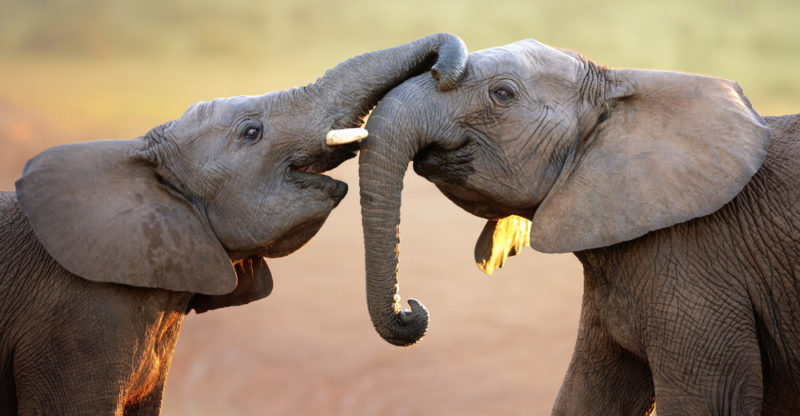 The main characteristic by which elephants are recognized is their trunk, called the proboscis. It is a nasal extension made up of more than 150 thousand muscles . This allows the tube to have complete mobility and flexibility in all directions . Since it is a fusion of the nose and the upper lip, it has multiple functions:
The main characteristic by which elephants are recognized is their trunk, called the proboscis. It is a nasal extension made up of more than 150 thousand muscles . This allows the tube to have complete mobility and flexibility in all directions . Since it is a fusion of the nose and the upper lip, it has multiple functions:
- Distinguish shapes and textures,
- Make sounds,
- Reach food both from the ground surface and from heights up to 7 meters above the ground,
- Suck up water and put it in your mouth,
- Smell (elephants have the highest olfactory sensitivity in the entire animal kingdom )
Elephant tusks
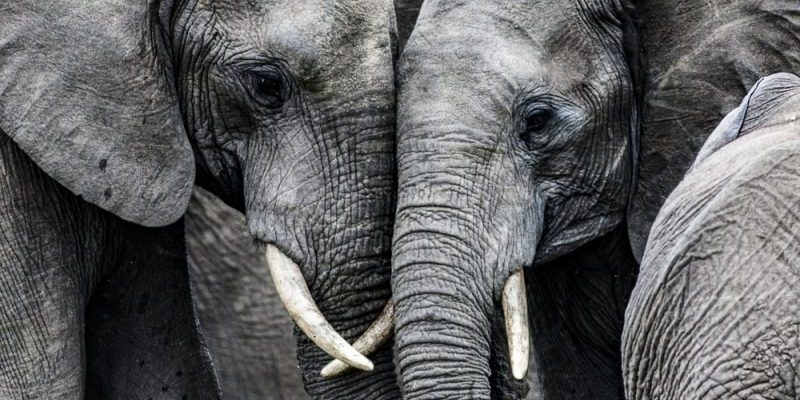 The teeth that protrude from the elephant's mouth are often called tusks, but in reality their function is that of incisors . They belong to the upper jaw and grow curved on the sides of the tube.
The teeth that protrude from the elephant's mouth are often called tusks, but in reality their function is that of incisors . They belong to the upper jaw and grow curved on the sides of the tube.They have multiple functions such as marking trees to mark their territory, attacking other animals and defending themselves , clearing a path in forests and also digging.
The tusks are made of ivory . For this reason, for centuries they were hunted and that is why the shortage of elephants today. Elephant tusk trafficking is currently prohibited.
Auditory pinna (ears)
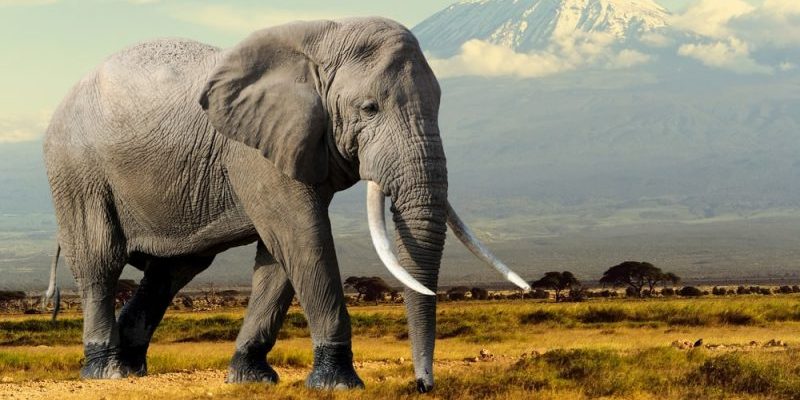 Elephants are also characterized by their large ears. These large surfaces are highly vascular , meaning that the blood circulates through them to cool down. One of the functions of the ears is thermoregulation.
Elephants are also characterized by their large ears. These large surfaces are highly vascular , meaning that the blood circulates through them to cool down. One of the functions of the ears is thermoregulation.
Elephant communication
In addition to the sounds they emit with their trunks, called barritar, elephants are also capable of emitting infrasound , that is, sounds that are not audible to humans. These sounds allow them to communicate over distances of several kilometers.In addition, it has been discovered that they can communicate by striking the ground with their large legs, which other elephants are able to perceive through their hooves.
Elephant feeding
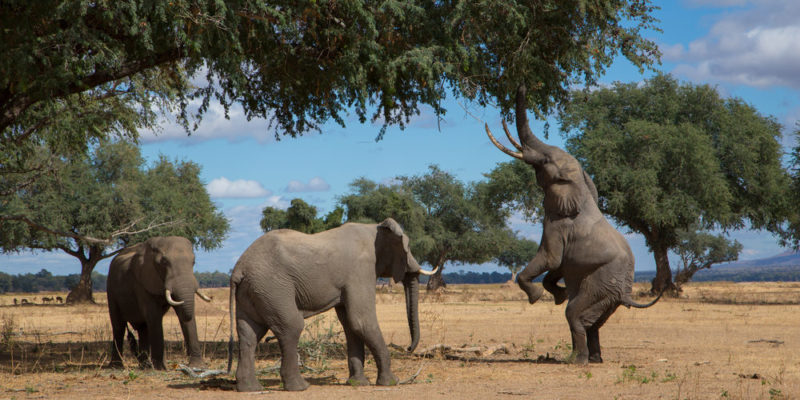 Elephants are herbivorous animals , so their food is only vegetable. They feed on plants in general and, depending on the plant, they can take advantage of leaves, fruits, bark and even herbs that grow directly from the ground. An adult elephant eats more than 300 kilograms of food daily.
Elephants are herbivorous animals , so their food is only vegetable. They feed on plants in general and, depending on the plant, they can take advantage of leaves, fruits, bark and even herbs that grow directly from the ground. An adult elephant eats more than 300 kilograms of food daily.
Elephant habitat
 Elephants live in both jungles and savannas . In the jungles they have a large amount of food available from the trees, but their movement is difficult due to their large size. In those cases they can use their fangs and the weight of their own body to break through.
Elephants live in both jungles and savannas . In the jungles they have a large amount of food available from the trees, but their movement is difficult due to their large size. In those cases they can use their fangs and the weight of their own body to break through.The savanna is an ecosystem with little trees but lots of herbs in the wet season. However, the dry season of the savannah implies the almost total absence of plant foods.
Elephant migration
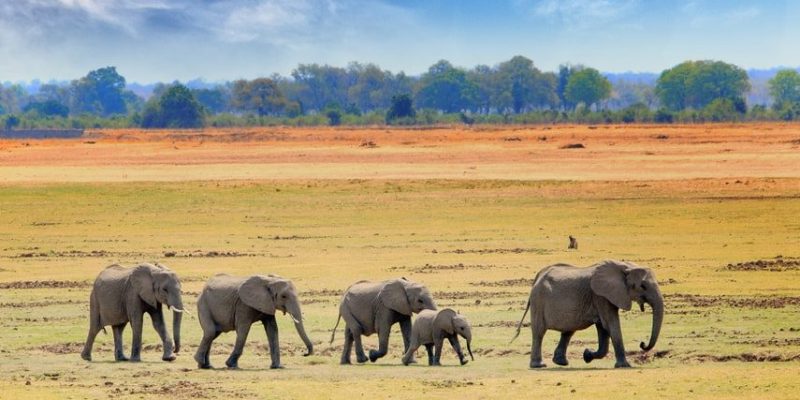 African elephants live in the savannas. For this reason, during the dry season they must migrate in search of water and food.
African elephants live in the savannas. For this reason, during the dry season they must migrate in search of water and food.The dry season begins in April and can last until the end of September. Between September and November, the elephants return to their place of origin , where they will again find plants that have grown with the onset of the rains .
Migration can take place in small family groups (females and males up to 20 years of age) or bond groups (made up of up to five families). However, in some cases massive migrations occur, meaning that an entire herd migrates together.
Elephant reproduction
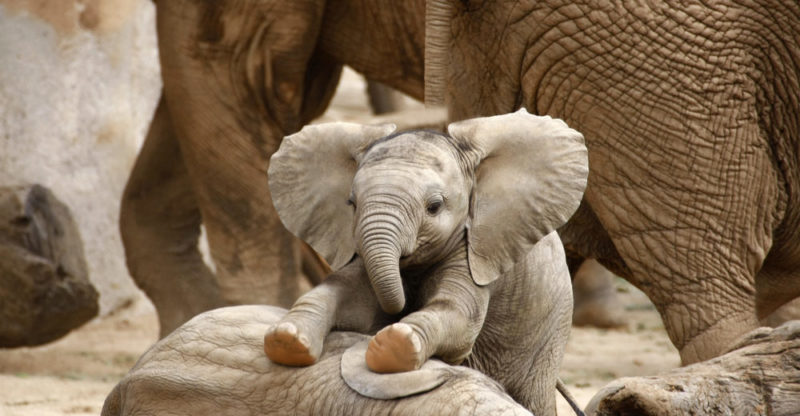 Elephants reach sexual maturity at approximately 14 years of age . However, the males that mate the most are the oldest, those between 40 and 50 years old. This is because males jostle for the right to mate, and older individuals are typically stronger.
Elephants reach sexual maturity at approximately 14 years of age . However, the males that mate the most are the oldest, those between 40 and 50 years old. This is because males jostle for the right to mate, and older individuals are typically stronger.The gestation period for elephants is the longest of all animals - 680 days. Almost always a single baby is born per pregnancy and in very rare cases there are two babies.
Asian elephant
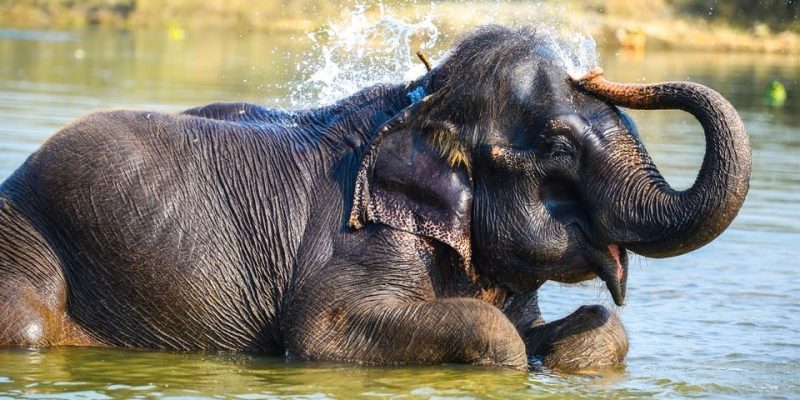 The genus Elephas is a jungle and forest elephant that can grow to be over three meters tall. It is characterized by having four toes on the front legs and only one on the trunk. Its ears are smaller than those of the African elephant.
The genus Elephas is a jungle and forest elephant that can grow to be over three meters tall. It is characterized by having four toes on the front legs and only one on the trunk. Its ears are smaller than those of the African elephant.
African elephant
Of the genus Loxodonta, it is characterized by its large size: it reaches more than four meters high. His ears have large panels. It has three toes on its front legs and two on its trunk.The above content published at Collaborative Research Group is for informational and educational purposes only and has been developed by referring reliable sources and recommendations from technology experts. We do not have any contact with official entities nor do we intend to replace the information that they emit.
MA student of the TransAtlantic Masters program at UNC-Chapel Hill. Political Science with a focus on European Studies. Expressed ideas are open to revision. He not only covers Technical articles but also has skills in the fields of SEO, graphics, web development and coding. .
Leave a reply
Your email address will not be published. Required fields are marked *Recent post

Sport: What Is It, Types, Risks, Features, Characteristics and Examples
September 23, 2021

Dogs: Emergence, Features, Characteristics, Feeding and Breeds
September 24, 2021

Story: Definition, Elements, Structure, Features and Characteristics
September 24, 2021

Essay: Definition, Structure, Features, Characteristics, How to Do It
September 24, 2021
